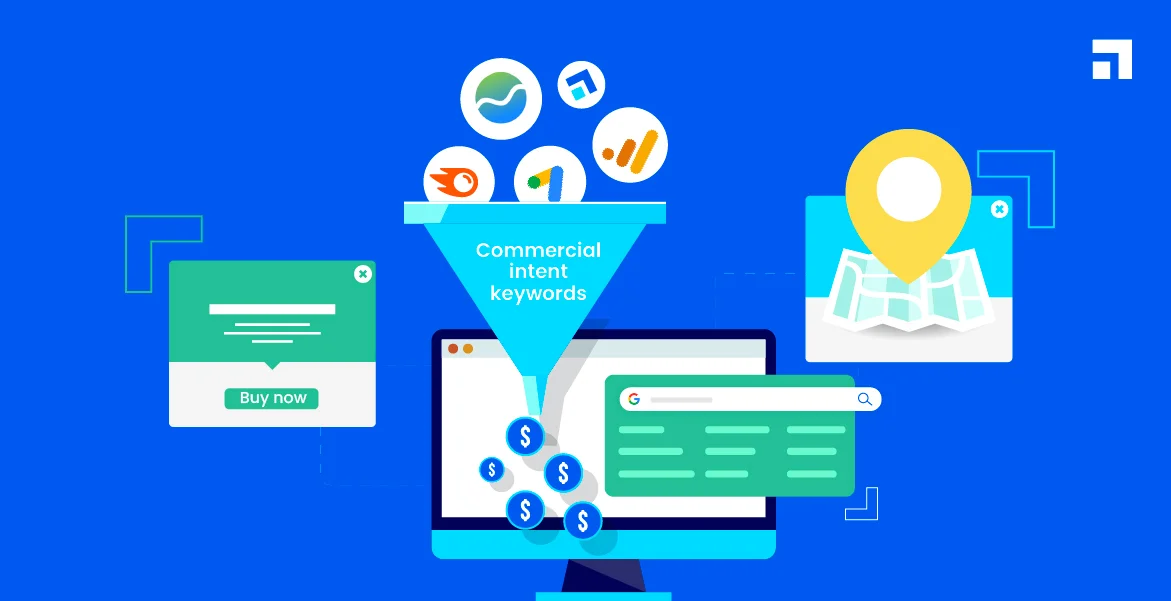[This is a test site and all posts are generated with ChatGPT unless indicated otherwise.]
What is Search Intent?
Search intent refers to the underlying motivation or purpose behind a user’s online search query. It reflects the specific information or action that a user intends to find or accomplish through their search. Understanding search intent is crucial for content creators as it helps them create valuable and relevant content that meets the needs and expectations of their target audience.
For content creators, grasping the nuances of search intent is essential for driving organic traffic, increasing engagement, and achieving desired outcomes. By understanding why users are searching for specific topics or keywords, content creators can tailor their content to address those needs effectively. This not only improves the user experience but also enhances the chances of their content ranking higher in search engine results.
Creating content that aligns with search intent offers several advantages. Firstly, it improves the visibility of your content by attracting more organic traffic from search engines. When users find content that directly answers their queries or fulfills their intentions, they are more likely to engage, share, and spend more time on your website. Secondly, aligning with search intent enhances user satisfaction, as they can easily find the information they are looking for, which builds trust and credibility.
Lastly, by meeting user expectations and providing value, content creators can increase conversions, whether it’s through product sales, lead generation, or other desired outcomes.
Different Types of Search Intent
1. Informational Intent
Informational intent refers to searches where users are seeking information, answers, or solutions to their queries. These searches typically start with question words like “how to,” “what is,” “why,” etc. Examples of informational intent include queries like “how to tie a tie,” “what is global warming,” or “why is exercise important.”

How to optimize content for informational intent
To optimize content for informational intent, focus on providing high-quality, informative, and comprehensive answers to user questions. Structure your content in a logical and organized manner, using headings, subheadings, and bullet points. Incorporate relevant keywords naturally throughout the content, and consider using FAQs, step-by-step guides, or instructional videos to enhance user experience.
Case studies or examples illustrating successful informational content
- “How to Bake the Perfect Chocolate Chip Cookies: A Comprehensive Guide”: This blog post offers a detailed step-by-step guide, complete with images and video demonstrations, providing aspiring bakers with all the information they need to bake delicious cookies.
- “The Ultimate Guide to SEO for Beginners”: This comprehensive guide covers everything from the basics of search engine optimization to advanced strategies, using real-world examples and case studies to help readers understand and implement SEO techniques effectively.
2. Navigational Intent
Navigational intent refers to searches where users are looking for a specific website, brand, or online destination. Users already have a specific website or brand in mind and use search engines to quickly navigate to their desired destination. Examples of navigational intent include queries like “Facebook login,” “Amazon,” or “OpenAI blog.”

Strategies for optimizing content for navigational intent
To optimize content for navigational intent, focus on enhancing your brand’s online visibility and ensuring that your website or online presence is easily accessible and well-optimized. Improve your website’s search engine optimization (SEO) to rank higher for branded terms. Utilize branded keywords, meta tags, and descriptions that accurately represent your brand and website.
Highlighting the role of branded searches in navigational intent
Branded searches play a significant role in navigational intent as users often rely on search engines to quickly find and access specific brands or websites. By establishing a strong online presence and ensuring your brand is easily discoverable, you can attract more organic traffic from users with navigational intent.
3. Transactional Intent
Transactional intent refers to searches where users intend to make a purchase or engage in a specific transaction. These searches often include terms like “buy,” “order,” “discount,” or specific product names. Examples of transactional intent include queries like “buy iPhone 12,” “best laptop deals,” or “discounted flights to London.”

Tips for creating content that caters to transactional intent
To create content that caters to transactional intent, focus on providing users with the necessary information to make a purchasing decision. Create product guides, reviews, comparison articles, or curated lists that highlight the features, benefits, and pricing information of relevant products or services. Include clear and compelling calls to action (CTAs) to guide users toward the desired transaction.
Importance of clear calls to action (CTAs)
Clear calls to action are essential in transactional content as they direct users towards the desired transactional activities, such as making a purchase or signing up for a service. Use persuasive language, prominent buttons, and clear instructions to encourage users to take action. Optimizing the placement and visibility of CTAs can significantly impact conversion rates.
4. Commercial Intent
Commercial intent refers to searches where users are researching products or services with the intent to make a purchase in the near future. These searches often include terms like “best,” “reviews,” “top-rated,” or “compare.” Examples of commercial intent include queries like “best smartphones of 2023,” “review of XYZ vacuum cleaner,” or “compare DSLR cameras.”

Strategies for targeting commercial intent with content
To target commercial intent with your content, focus on creating product comparisons, in-depth reviews, buying guides, or curated lists that help users make informed purchasing decisions. Incorporate relevant keywords and provide detailed information on product features, specifications, pros and cons, and pricing options. Utilize visual elements such as images or videos to enhance user engagement.
The role of product comparisons, reviews, and pricing information
Product comparisons, reviews, and pricing information play a crucial role in commercial intent searches as users seek objective evaluations and information to compare different options before making a purchase. By providing comprehensive and unbiased content that highlights the strengths and weaknesses of products, you can assist users in making informed decisions, ultimately influencing their purchase choices.
Understanding the different types of search intent allows content creators to tailor their content to meet users’ specific needs, increasing the likelihood of attracting and engaging their target audience effectively.
Identifying search intent
By employing these techniques, content creators can gain a comprehensive understanding of search intent, allowing them to tailor their content to meet users’ needs effectively. Understanding search intent is crucial for delivering valuable and relevant content that engages and satisfies the target audience.
1. Keyword Research Techniques for Understanding Search Intent
- Utilize keyword modifiers to gain insights into search intent. These modifiers include words like “best,” “how to,” “reviews,” “tips,” or location-specific terms. For example, adding “best” before a keyword (“best smartphones”) indicates a user’s intention to find top-rated options.
- Examine related search queries provided by search engines to understand variations in search intent. Analyzing these queries helps identify specific questions, concerns, or topics users are searching for, providing valuable insight into their intent.
- Take advantage of keyword research tools like Google Keyword Planner, SEMrush, or Moz Keyword Explorer. These tools provide data on search volume, competition, and related keywords, aiding in understanding search intent by identifying popular and relevant search queries.

2. Analyzing Search Engine Results Pages (SERPs)
- Observe the SERP features that appear for specific keywords to gain insight into search intent. For example, if a query triggers a featured snippet, it suggests an informational intent. If the results display product listings or shopping ads, it indicates a transactional or commercial intent.
- Analyze the content ranking on SERPs for target keywords. Review competitor articles, blog posts, or product pages to understand how they address search intent. Identify common themes, formats, and strategies used by successful content to align your own content with the expected intent.
- Use SERP analysis tools like Moz’s SERP Analysis tool or Ahrefs’ SERP Overview to gain deeper insights. These tools provide information on organic rankings, featured snippets, paid ads, and other elements present on the SERPs, enabling you to evaluate search intent and competition more effectively.
3. User Behavior and Intent Signals
- Leverage web analytics tools, such as Google Analytics or similar platforms, to analyze user queries and search patterns on your website. Examine the keywords that drive traffic and user engagement metrics like time on page or bounce rate to understand the intent behind users’ queries.:
- Pay attention to user feedback, comments, and social media interactions to gain insights into their intent. Monitor engagement metrics such as likes, shares, or comments to understand how well your content resonates with users and whether it aligns with their intended goals.
- Reach out to your audience through surveys or interviews to directly gather information about their search intent. Ask questions about their motivations, pain points, and desired outcomes to gain a deeper understanding of their search behavior and intent.
4. Creating content for search intent
- Structure your content based on the identified search intent. For informational intent, use a question-and-answer format or step-by-step guides. For transactional intent, include product descriptions, pricing information, and clear calls to action. Adapting your content structure to match the intended user journey enhances user experience and engagement.
- Break down your content using headings, subheadings, and bullet points to improve readability and cater to different search intents. Headings help users scan the content quickly, while subheadings divide the information into logical sections. Bullet points make information concise and scannable, aiding users in finding specific details.
- Enhance user engagement by incorporating relevant images, infographics, or videos in your content. Visual elements not only break up text but also provide additional context, clarify complex concepts, and make the content more visually appealing. Multimedia elements can help satisfy both informational and visual search intents.
5. Writing Style and Tone
- Adapt your writing style and tone to align with the identified search intent. For informational intent, adopt a clear and informative tone, providing accurate and detailed explanations. For transactional intent, adopt a persuasive and action-oriented tone, highlighting the benefits and value of the product or service being promoted.
- Identify the pain points or challenges users may have related to the search intent and address them in your content. Anticipate their questions, concerns, or problems and provide practical solutions or actionable advice. By offering valuable solutions, you establish credibility and demonstrate your expertise in addressing users’ needs.
- Incorporate storytelling techniques to captivate readers and create an emotional connection. Narrate relevant anecdotes, share personal experiences, or present case studies to illustrate key points and make your content more relatable. Storytelling can effectively engage users across different search intents and leave a lasting impact.
6. Optimizing Meta Tags and Descriptions
- Craft meta titles and descriptions that accurately represent the content and align with the search intent. Incorporate relevant keywords naturally while maintaining a compelling and concise description that entices users to click. Use power words, unique selling propositions, or specific benefits to grab users’ attention in the search results.
- Ensure that your meta tags and descriptions include relevant keywords related to the search intent. Optimize them to match users’ search queries while maintaining a persuasive and compelling language that encourages click-throughs. Balancing keyword optimization and persuasive language improves both search visibility and user engagement.
- Implement schema markup and structured data to enhance your search listings with rich snippets. Utilize schema markup relevant to the content, such as product reviews, ratings, or recipe information. Rich snippets provide additional information to users directly in the search results, increasing visibility and attracting clicks.
By implementing these strategies, content creators can create content that aligns with search intent, engages readers, and increases visibility in search engine results. Understanding user needs and adapting content structure, writing style, and metadata optimization accordingly greatly enhances the effectiveness and impact of your content.
Measuring success and iterating
Key Performance Indicators (KPIs) for Measuring Content Effectiveness
1. Organic traffic and ranking improvements
Monitor the organic traffic your content receives and track improvements in search engine rankings. Increased organic traffic and higher rankings indicate that your content is resonating with the target audience and is being deemed relevant by search engines.
2. User engagement metrics (time on page, bounce rate)
Evaluate user engagement metrics like average time on page, bounce rate, and pages per session. A longer time on page and lower bounce rate suggest that your content is engaging and valuable to users. It indicates that visitors are spending more time consuming your content and exploring related pages.
3. Conversion rates and goal completions
Track conversion rates and goal completions tied to your content, such as newsletter sign-ups, form submissions, or product purchases. These metrics help measure the effectiveness of your content in driving desired actions and achieving specific objectives.
Analyzing and Interpreting Data
1. Using web analytics tools to track and analyze user behavior
Leverage web analytics tools like Google Analytics to gain insights into user behavior. Analyze data such as traffic sources, user demographics, page views, and behavior flow to understand how users interact with your content. Identify patterns, trends, and areas of improvement based on the data.
2. Identifying content gaps and areas for improvement
Analyze user queries and search terms that lead to your content. Identify content gaps by understanding the intent behind those queries and assessing whether your content adequately addresses them. Look for opportunities to create additional content or optimize existing content to fill those gaps.
3. A/B testing and experimenting with different content approaches
Conduct A/B tests to experiment with different content approaches and measure their impact. Test variations in headlines, call-to-action (CTA) placement, content length, or multimedia elements. Measure the performance of each variation by comparing relevant KPIs to determine which approach yields better results.
Iterating based on data analysis and experimentation allows you to optimize your content strategy and improve its effectiveness over time. By consistently analyzing data and making data-driven decisions, you can refine your content to better align with user needs and achieve your goals.
Remember that measuring success and iterating is an ongoing process. Continuously monitor and analyze your content’s performance, adapt your strategy based on insights, and strive for continuous improvement to meet evolving user expectations and achieve long-term success.
Create Content That Aligns With Your Search Intent
Understanding search intent is crucial for content creators. It allows you to create content that aligns with users’ needs, improving the chances of attracting and engaging your target audience. By delivering relevant and valuable content, you can establish your expertise, build trust, and drive desired actions.
Creating content that aligns with search intent is an ongoing process. Embrace user feedback and engagement metrics as valuable sources of insights. Regularly analyze data, identify content gaps, and experiment with different approaches. Continuously refine and optimize your content based on user feedback to ensure it remains relevant, valuable, and effective in meeting user needs.
By consistently refining your content strategy based on user feedback and understanding search intent, you can enhance user experience, improve search engine visibility, and achieve your content goals. Stay attuned to user needs, adapt to evolving trends, and strive for excellence in delivering content that serves and satisfies your audience.


